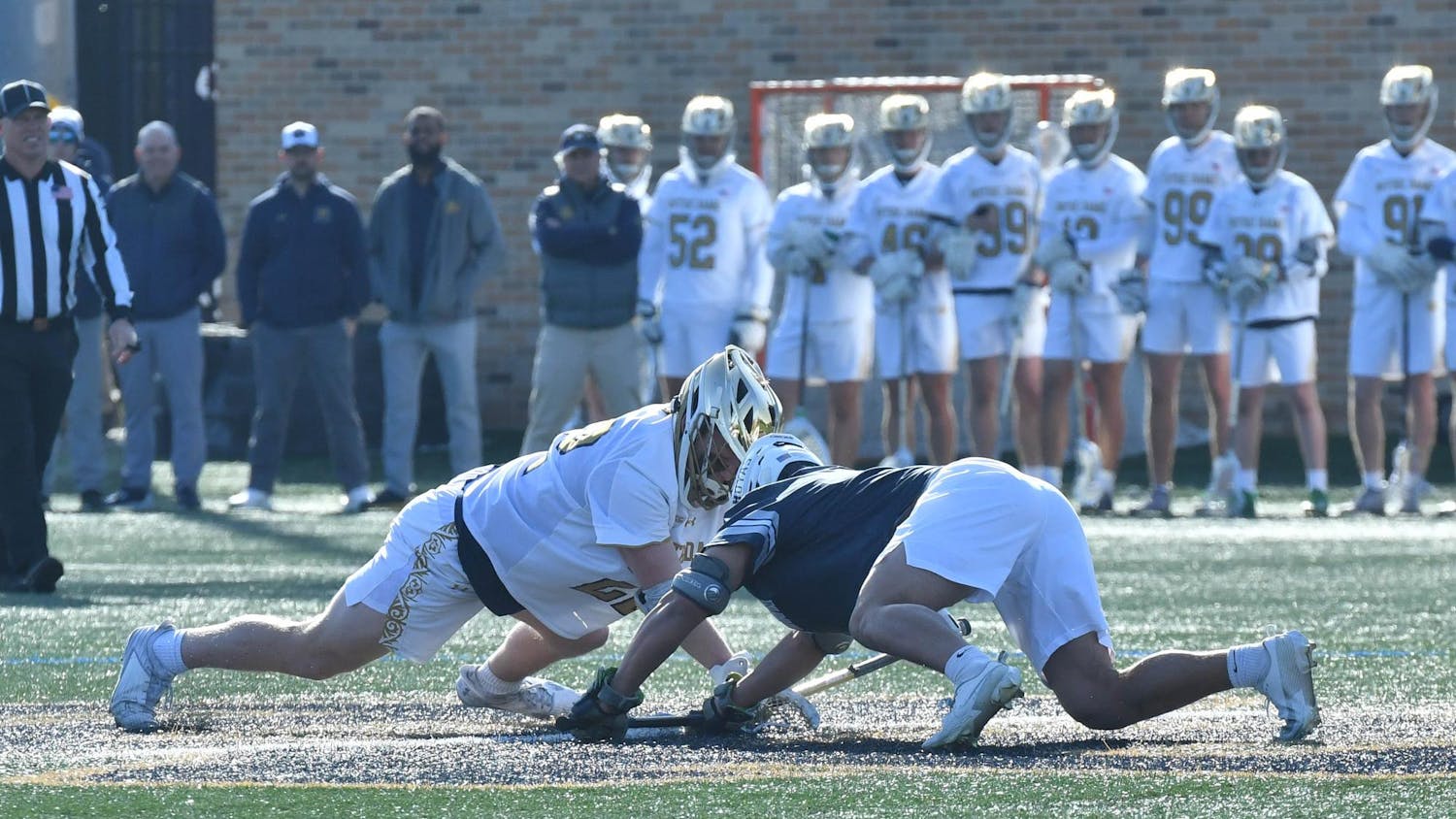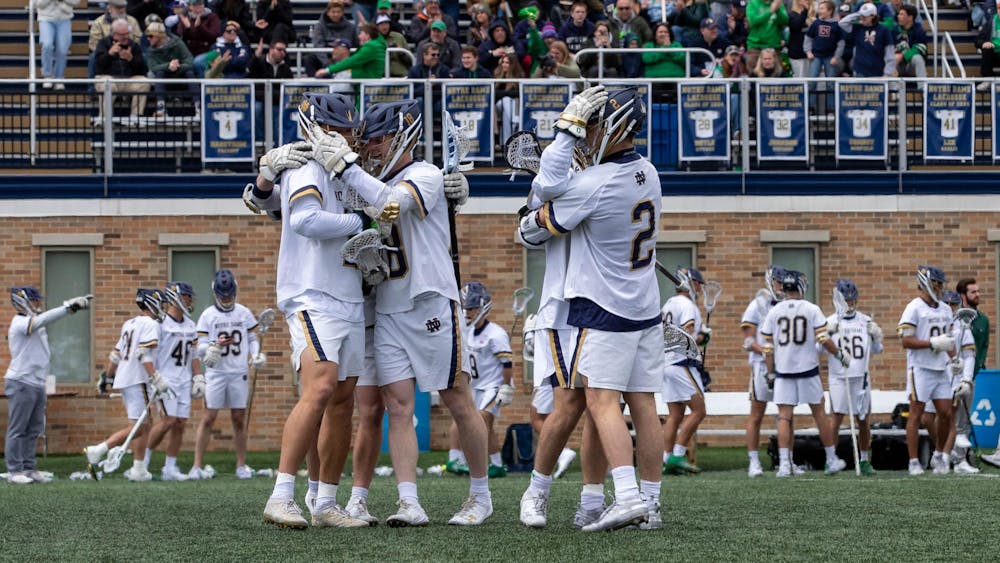This is spring ball.
Almost everything means nothing. Almost nothing means anything. Players have 15 practices to prove to the coaching staff - and an overeager fan base -next year will be different. You'll hear about so-and-so impressing and this-and-that position battle.

But you won't hear that from me. I'm here to talk about the most meaningful position for Notre Dame this year: running back.
Gasp, shock, awe.
That's right, it's the person next to Tommy Rees that will decide Notre Dame's fate this year. It's the person to the left of Andrew Hendrix that should carry the load for the Irish. It's the person to the right of Everett Golson that will be better than they were a year ago. It's the player sharing a backfield with Gunner Kiel that will grind out the wins for Notre Dame.
And with a returning backfield featuring 1,000-yard rusher Cierre Wood, running back-converted-receiver-converted-running back Theo Riddick and USC transfer Amir Carlisle, why shouldn't the running back be the most meaningful position on the field?
Wood - who combined with Jonas Gray to top nearly 2,000 yards rushing - enters camp the undisputed starter in the backfield and will look to build on last season, when he scored nine touchdowns on the ground.
Riddick and Carlisle will fight for playing time behind Wood, while George Atkinson III could provide the "big back" option for the Irish. Atkinson has the size (he stands at six-foot-one) and speed (remember his two kick returns last season) to also challenge for a spot in the lineup.

Don't forget the Irish unorthodoxly group the running backs and slot receivers into the same position group under Irish running backs coach Tony Alford. That means Robby Toma could get some carries as well.
While having four options at quarterback may be a bad thing, having five at running back certainly is not.
I know you've heard all about the turnovers costing the Irish football game after football game. And that is right, without a doubt. But you probably haven't heard about 41, 57 and 93. Those are the rushing totals in Notre Dame's last three losses last year to USC, Stanford and Florida State, respectively.
Comparatively, in their eight wins, the Irish averaged nearly 200 yards rushing per game. The lowest total in a victory was a 114-yard output in the 31-13 win over Michigan State.
Clearly, success of the running game is paramount to the success of the program. It's not just Notre Dame, either.
Each of the last six BCS champions has leaned heavily on the run game and ridden star running backs (or running quarterbacks) to championships. Of course, each squad also had a stringent defense.
But wait, don't the Irish have a pretty tough front seven themselves? Led by linebacker Manti Te'o and defensive end Aaron Lynch, the answer is a simple yes.
If the running backs can move the chains and keep the ball away from the quarterbacks - and, therefore, from other teams - the Irish could fare favorably against a quite unfavorable schedule.
If the running backs can chew up yards and the clock, Notre Dame alums may stop calling for Brian Kelly's job.
If the running backs live up to their potential, it may not even matter who the signal caller is.
Run and win. It is just that simple.
Contact Matthew DeFranks at mdefrank@nd.edu












